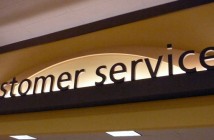According to recent reports, a recession — strictly defined as two consecutive quarters of declining growth — may be on America’s economic horizon. Af-ter nine years of unprecedented growth and record low unemployment, the whispers are getting louder. The “R” word is making increasing inroads in today’s business lexicon and has become fodder for the media.
A recent cover story of Business Week stated that “All signs point to slower growth, and a growing number of economists say a recession in 2001 is a distinct possibility.” In a December 2000 Associated Press article, David Levy, an economist at Bard College in Annandale-on-Hudson, put the odds of a recession occurring in 2001 at 70 percent.
It’s not just the academics, analysts and reporters forecasting a recession. Dave Voss, owner of Voss’ Truck Stop in Cuba, Mo., had this to say on Public Radio International’s (PRI) Marketplace radio program: “Trucking is down nine to 12 months before the government says we’re in a recession. Truck business started to decrease in February 2000.”
Traditionally, a recession translates into a reduction of revenue, uncertain projected corporate earnings as well as employee lay-offs. Have you taken the time to determine how your company may be affected by a recession?
If you’ve taken the time to plan ahead, have you also considered how a customer care strategy can help with the economic uncertainty of a recession?
An effective customer relationship management (CRM) strategy can be a key to maintaining, if not growing, your bottom line. This is especially beneficial during a recession when revenues may be flat or declining and there are insufficient resources to acquire new customers. With proper planning, that time, money and resources could be better targeted — during weaker economic periods — at retaining and building loyalty among a company’s current and most profitable customers.
One planning option can include data mining — the process of selecting specific information from a data pool — that helps a company identify and target its most loyal customers.
Information technology has enabled companies to collect and store enormous amounts of vitally important historical customer data, such as purchasing history, demographic and geographic information.
With the use of automated or semi-automated technology, the company can initiate a query search to identify customer trends or purchasing history. Your company can analyze the data and the information can be used to make a better-informed decision about serving a customer. For instance, you no longer wait for your client to call you for service; your data indicates it is time for your client to receive a notice from you about a service visit.
Equipped with this data, a company can also pinpoint consumers who have not purchased a product or service from the company over a specific time period. With this information, a company can contact this consumer to inquire about the lack of purchases or the level of service they received. In addition, the company can inform the consumer about new products or correct any service problems they encountered previously, and in so doing, possibly encourage the consumer to become a regular customer.
Data mining can be used to minimize risk. Information gathered regarding a customer’s credit history allows a company to target credit worthy customers. In addition, it also provides a company cross selling or up selling opportunities for new products or services. For instance, a customer may have a great credit history but does not have a line of credit with your company. Because of the customer’s credit history, you may want to extend a line of credit as well as offering higher priced, select goods to this individual.
Data mining is one customer care option that enables a company to better serve its customers. Another option you may want to consider is constructing your company’s Web site to be customer-centric by adding online bill payment options, billing status/account balance or an e-mail function that directs inquiries to specific departments.
The extraordinary growth of technology in the past decade has significantly expanded the contact points between companies and their customers to include the telephone, fax, e-mail, text chat and voice over IP, among others. In an economic downturn, you want to make sure these same access points are available to your customers.
A 2000 BizRate.com Consumer Online Report reviewed several categories that were important to customers and why they returned to do business with a company. Above all else, the number one category was the quality of customer support that included knowledgeable, courteous and efficient customer relationship associates (CRAs).
According to Harvard Business School Press, an effective CRM strategy is key to maintaining customer loyalty, which in turn improves a company’s bottom line because a loyal customer:
• Purchases more products
• Will pay higher prices
• Costs less to work with
• Reduces a company’s acquisition costs
The study further states that by increasing your company’s customer retention from 90 to 95 percent, you can increase your pretax profits by 45 percent. That’s good news even in a non-recession period.
To help determine how best to take advantage of your current client base, take the time to find a CRM partner that specializes in your industry. For those with a current customer care strategy in place, it may be time to sit down with your outsourcing partner to ensure that you are optimizing your current and future strategies.
Keep in mind, customer care is the driving force behind CRM. Being receptive to your customers changing needs, in good times and bad, and providing them with the means to communicate those needs to you will determine your CRM strategy success and, possibly, your bottom line profitability.
Making Advertising Work
by JIM KRESS of COCC
Small businesses are pressed for time and money. With
that in mind, consider the following in an effort to maxi-
mize your promotional efforts.
Know your customer. Sounds simple doesn’t it? It is. You should know what radio station they listen to, what their favorite section in the newspaper is and where they live. Place five things you want to know about your customer on a postcard. Drop it in each customer’s shopping bag along with a piece of candy or a token for a free item at the store and a personal thank-you for returning the card. Then use the corresponding media that reaches those people and places.
Know how your customers shop – they may find you in the yellow pages, but they probably remember you from your ads in the newspapers or on the radio. Even people who use word of mouth to find service providers use the yellow pages to contact the business. Where would your customer look? Example – would they look under graphic designers or printers if they needed graphic design work done?
Have a rolling annual promotional plan. This helps maximize investment and expenses in printing and photography by being able to spread those costs over a variety of promotional efforts over time. You can always use your print ads as circulars, direct mail pieces, customer handouts or signs inside your business.
Smaller and sooner rather than larger and later. A small business may be better off to have a regular image in the paper to help build top of mind awareness than to run a large ad infrequently due to cost.
For those with more time than money – create a public relations strategy. Don’t just send a press release to the different media outlets. Know who to talk to, what they want and when and how they want it. Develop a personal relationship with each local media contact. They may prefer your press release in an electronic format or a specific font, or want you to be the local expert on a particular topic. You won’t know unless you talk to each one directly.
Consider the two-step approach to brochure distribution. The first step is to run ads that make one key point about your business or service and then ask the reader to “Call or write for our free brochure.” Only those interested will take this next step. When you send the brochure, include a hand written thank you note. Follow up a couple of weeks later with another letter with offerings to help close the sale.
When promoting services, remember you are “selling a promise”. Your promotional materials must help potential customers believe your “promise”. Do your ads answer “what’s in it for me?” And how do you support what you are promising? There is a big difference between saying “excellent service” and 96% of all jobs are done on time.
Most importantly, set aside time on a regular basis to work on your promotional efforts. Every time a small business concentrates on a topic, that area of their business improves. It may be accounting problems, management issues, customer service or marketing. Give it the time it deserves. It’s your business and your image.
Jim Kress teaches Advertising and Marketing at COCC where his classes regularly work with small businesses in solving marketing problems. He can be reached at (541)383-7712




